Do you want to add GTIN, ISBN, and MPN schema to your WooCommerce store or WordPress website?
Using GTIN, ISBN, and MPN schema on your WordPress site can help search engines better understand your products. This can boost your website’s SEO rankings.
In this article, we will show you how to easily add the GTIN, ISBN, and MPN schema in WooCommerce and WordPress.
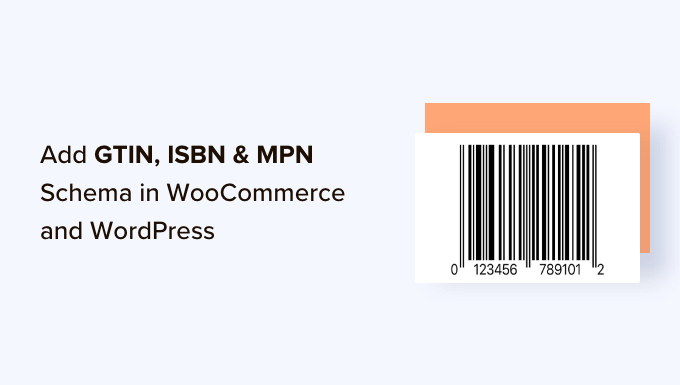
Why Add GTIN, ISBN, & MPN Schema in WooCommerce and WordPress?
GTIN (Global Trade Item Number) is used to identify trade items such as products or services. By contrast, ISBN (International Standard Book Number) is used for tracking books, eBooks, and audiobooks.
On the other hand, MPN (Manufacturer Part Number) is for tracking specific electronic components and parts, such as integrated circuits and resistors.
GTIN, ISBN, and MPN schema properties are markup code that you can add to your WordPress website to provide detailed and accurate product information to search engines.
This markup can improve your content visibility and improve the SEO of your website. When people search for a specific ISBN, GTIN, or MPN, then your products may show up in the search results.
For example, if you run an online store that sells books, then you can add the ISBN schema to increase your website visibility.

Using schema markup in WooCommerce or WordPress can be a great way to get more clicks to your website from organic search results, leading to more sales.
It can also improve the customer shopping experience by making it easier for users to find and purchase your products.
That being said, let’s see how to easily add GTIN, ISBN, and MPN schema in WordPress and WooCommerce. You can use the quick links below to jump to the method you want to use:
Method 1: Add GTIN, ISBN, & MPN Schema to WordPress Website
If you are looking to add GTIN, ISBN, or MPN schema to your WordPress website, then this method is for you.
You can easily add this schema using All in One SEO (AIOSEO), which is the best WordPress SEO plugin on the market and is used by over 3 million websites.
The plugin also allows you to add different types of schema to your website, including FAQs, recipes, articles, and product schema.
First, you need to install and activate the AIOSEO plugin. For detailed instructions, you may want to see our beginner’s guide on how to install a WordPress plugin.
Note: AIOSEO also has a free version. However, you will need the plugins’ Pro plan to unlock the schema markup feature.
Upon activation, the plugin will launch the setup wizard on your screen, which will walk you through the setup process.
If you need any help with it, then you may want to see our step-by-step guide on how to set up All in One SEO in WordPress.
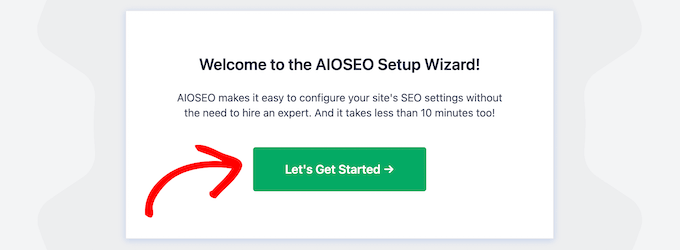
Next, you must visit the AIOSEO » Search Appearance page from your WordPress admin sidebar and switch to the ‘Content Types’ tab.
From here, scroll down to the ‘Products’ section and switch to the ‘Schema Markup’ tab. After that, select the ‘Product’ option from the ‘Schema Type’ dropdown menu.
Finally, click the ‘Save Changes’ button to store your changes.

Now, you will be able to add separate schema markup for all your products. To do this, head over to the page or post where you want to add the ISBN, GTIN, or MPN schema from the WordPress admin sidebar.
Once you are there, scroll down to the ‘AIOSEO Settings’ section in the block editor and switch to the ‘Schema’ tab.
Next, you need to click on the ‘Generate Schema’ button.
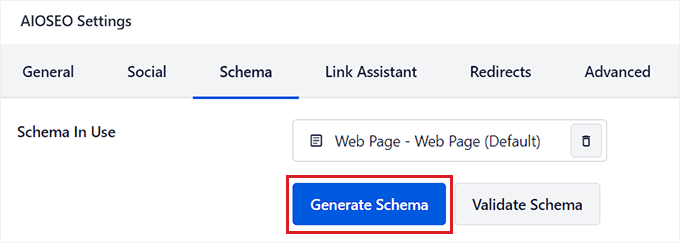
This will launch the ‘Schema Catalog’ popup on your screen, where you can select the schema template you want to add.
Go ahead and click the ‘+’ button next to the ‘Product’ option.

This will open up a modal where you can add the details for your single product and tell search engines like Google all of its information.
You can start by providing your product’s name, description, brand, SKU, and image.
Once you have done that, scroll down to the product Identifiers section, where you can insert the GTIN, ISBN, or MPN.
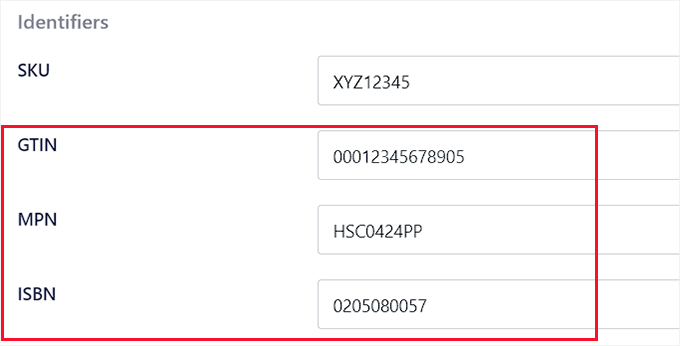
After that, you can further scroll down to add the price, attributes, reviews, and shipping destination for the product in the schema markup.
Once you are done, just click the ‘Add Schema’ button to save your schema markup. Now, you can repeat the process for the other products on the page.
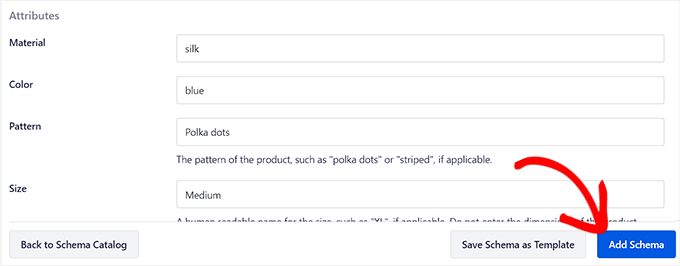
If you sell books online, then you can also select the ‘Book’ schema from the ‘Schema Catalog’ popup. This will open up a new modal where you can add product data like title, author, description, and image of the book.
After that, scroll down to the ‘Editions’ section and add the ISBN for the book. Finally, click the ‘Add Schema’ button to generate the schema.

Once you have added the GTIN, MPN, or ISBN schema for all the products, don’t forget to click the ‘Update’ or ‘Publish’ button at the top to save your changes.
You and your visitors won’t be able to see a difference on the front end of your website, but search engine bots will now have the ISBN, GTIN, or MPN details for the products.
Method 2: Add GTIN, ISBN, & MPN Schema to Your WooCommerce Store
If you want to add GTIN, ISBN, or MPN schema markup in your WooCommerce store, then you can use this method.
You can easily add the schema markup for ISBN, GTIN, and MPN using the All in One SEO (AIOSEO) plugin, which is the best WordPress SEO plugin on the market.
First, you need to install and activate the AIOSEO plugin. For detailed instructions, you may want to see our step-by-step guide on how to install a WordPress plugin.
Note: AIOSEO has a free version, but you need the Pro version to unlock the schema markup feature.
Upon activation, the plugin will launch a setup wizard on your screen. If you need any help, then you may want to see our tutorial on how to set up All in One SEO in WordPress.

Next, head over to the Products » All Products page from the WordPress admin sidebar.
From here, just click the ‘Edit’ link under the product where you want to add the GTIN, ISBN, or MPN schema.

This will open up the ‘Edit Product’ page, where you must scroll down to the ‘AIOSEO Settings’ meta box.
From here, switch to the ‘Schema’ tab, where you will see the ‘Product’ schema is already in use by default. Now, simply click the ‘Edit’ button next to the schema.

This will open up an ‘Edit Product’ popup on the screen, where you will see that the ‘Autogenerate Field’ toggle has been switched to ‘Yes’.
This means that AIOSEO automatically fetches and fills the schema data for the product title, image, and description.
However, if you would like to fill these fields manually, then you can simply switch the ‘Autogenerate Fields’ toggle to ‘No’.
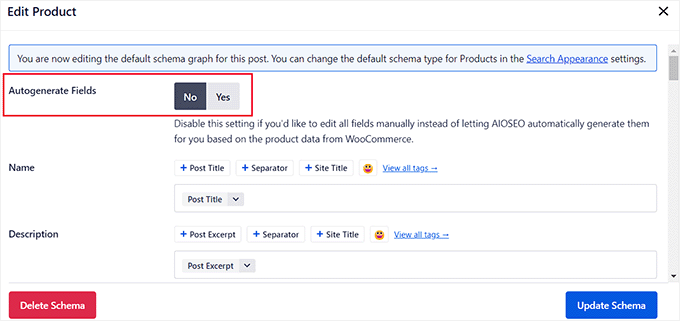
After that, scroll down to the ‘Identifiers’ section and add the GTIN, ISBN, or MPN for your product. You can also add other attributes, shipping destinations, and product reviews in the schema markup.
After you have made your changes, don’t forget to click the ‘Update Schema’ button.
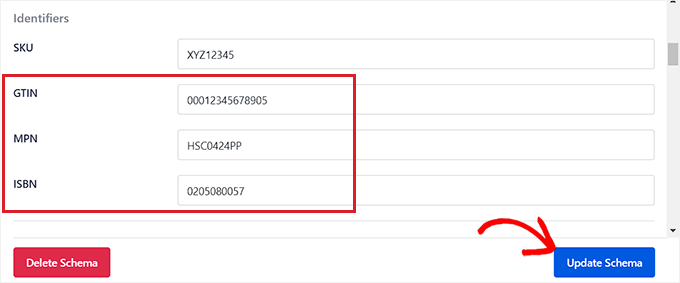
If your online store only sells books, then you can click on the ‘Generate Schema’ button in the Schema tab and then select the ‘Book’ schema template from the catalog.
This will open the Schema Generator on the screen, where you can add the title, image, and description for the book you are selling.
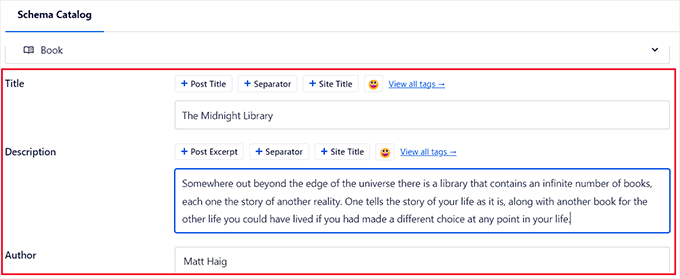
After that, scroll down to the ‘Editions’ section and add the ISBN for your book.
After entering the details, click the ‘Add Schema’ button to generate your schema markup for books.

Finally, click the ‘Update’ button at the top to store your changes.
You have now successfully added a schema markup for your products, including the GTIN, ISBN, or MPN details.
Keep in mind that these changes will not be visible on your website’s front end but will help search engine bots rank your content.
Bonus: Add Your Products to Google Shopping
Apart from adding the GTIN, ISBN, or MPN schema for your goods, another way to make your site noticeable for search engines is to add your products to Google Shopping.
Google Shopping is a virtual marketplace where users can search, view, and compare products from different vendors. By adding your products to this market, you can bring more traffic to your ecommerce store and generate more revenue.
To add your products here, you must first create an account in the Google Merchant Center.
Once you do that, link your account to your Google AdWords account.

Next, you have to install and activate the ELEX Google Shopping plugin. For details, see our tutorial on how to install a WordPress plugin.
Here, you must create a feed for all your products and download them as an XML file. After that, simply upload this file to your Merchant Center account.

Once you do that, customers browsing on Google Shopping will be able to view your products as well.
For detailed instructions, see our tutorial on how to automatically add WordPress products in Google Shopping.
We hope this article helped you learn how to easily add the GTIN, ISBN, and MPN schema in WooCommerce and WordPress. You may also want to see our tutorial on how to add FAQ schema in WordPress and our expert picks for the best WordPress schema markup plugins.
If you liked this article, then please subscribe to our YouTube Channel for WordPress video tutorials. You can also find us on Twitter and Facebook.





Syed Balkhi says
Hey WPBeginner readers,
Did you know you can win exciting prizes by commenting on WPBeginner?
Every month, our top blog commenters will win HUGE rewards, including premium WordPress plugin licenses and cash prizes.
You can get more details about the contest from here.
Start sharing your thoughts below to stand a chance to win!
kzain says
This is a great SEO tip for product-based websites! Adding schema markup for product identifiers like GTIN and ISBN feels like a way to give search engines more context about my products
Dennis Muthomi says
As a WooCommerce store manager, I found your explanation of these terms and their SEO benefits particularly helpful. I appreciate how you broke down the process of adding these schemas using the AIOSEO plugin – it seems straightforward and manageable.
The bonus tip about Google Shopping is a great addition too.
But sadly Google Shopping is not available in my country, hopefully one day it will be availabele
THANKGOD JONATHAN says
Thanks for the clear explanation of GTIN, ISBN, and MPN schema! I wasn’t familiar with these terms before, but I can see how adding them to my WooCommerce site could be beneficial for SEO. I’m going to try out the All in One SEO plugin to add this schema to my product pages. I’m hoping that it will help me improve my ranking in search results.
Ralph says
I would love to make my books on amazon kdp more visible thanks to my website but does that ISBN really helps? There is no harm in doing that and I will definitely do that, but personally I don’t know a single person that use it. Everybody just google the name of the book. Does this increase visibilty and can help promote a book in a saturated niche?
WPBeginner Support says
ISBN mainly helps if there are books with similar titles and some tools use ISBN to help keep track of books.
Admin